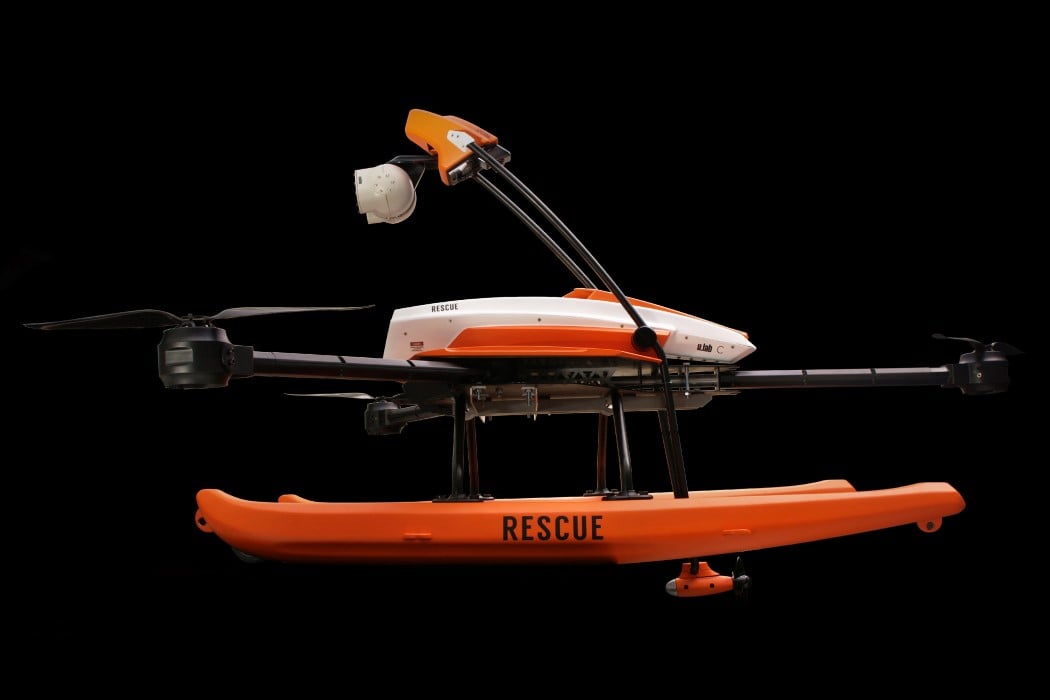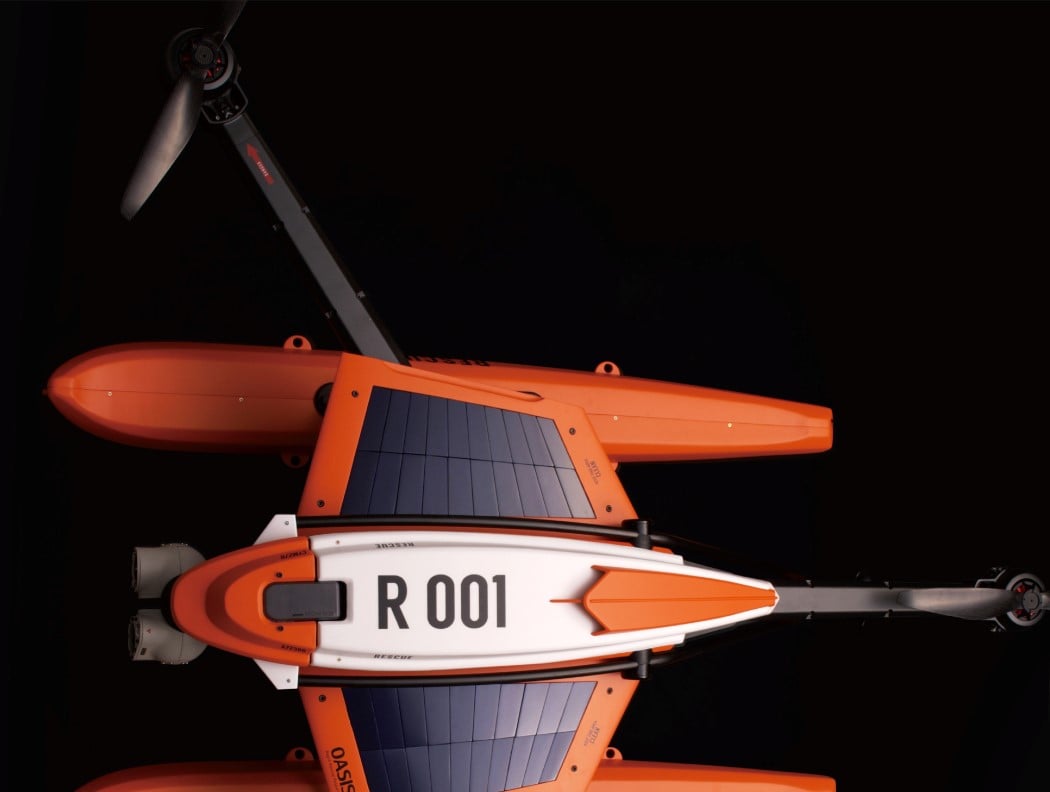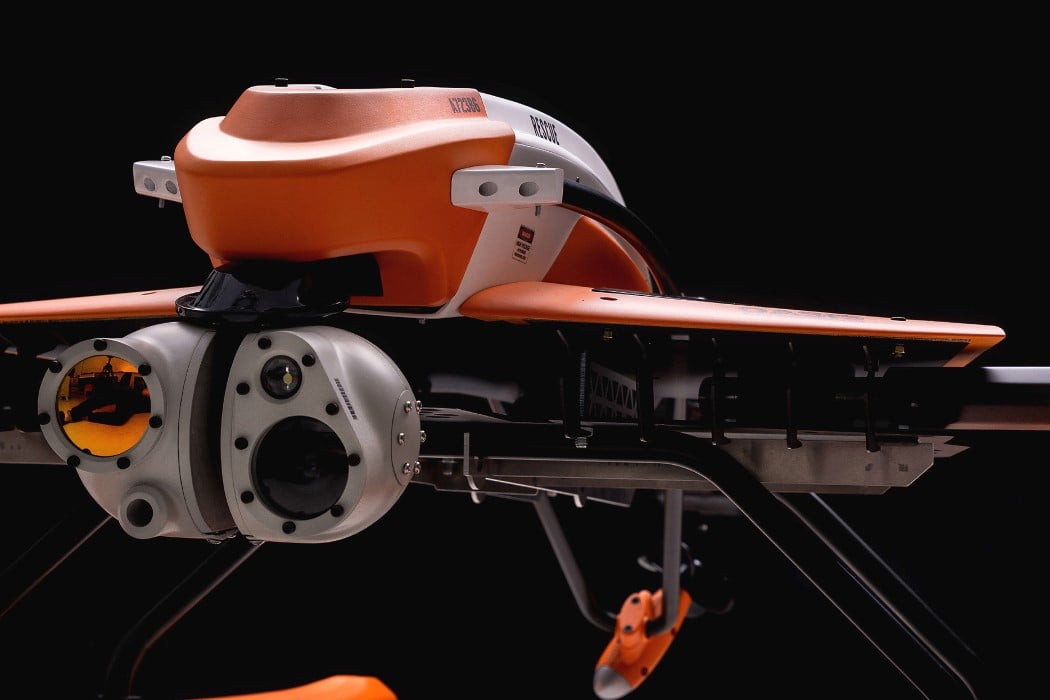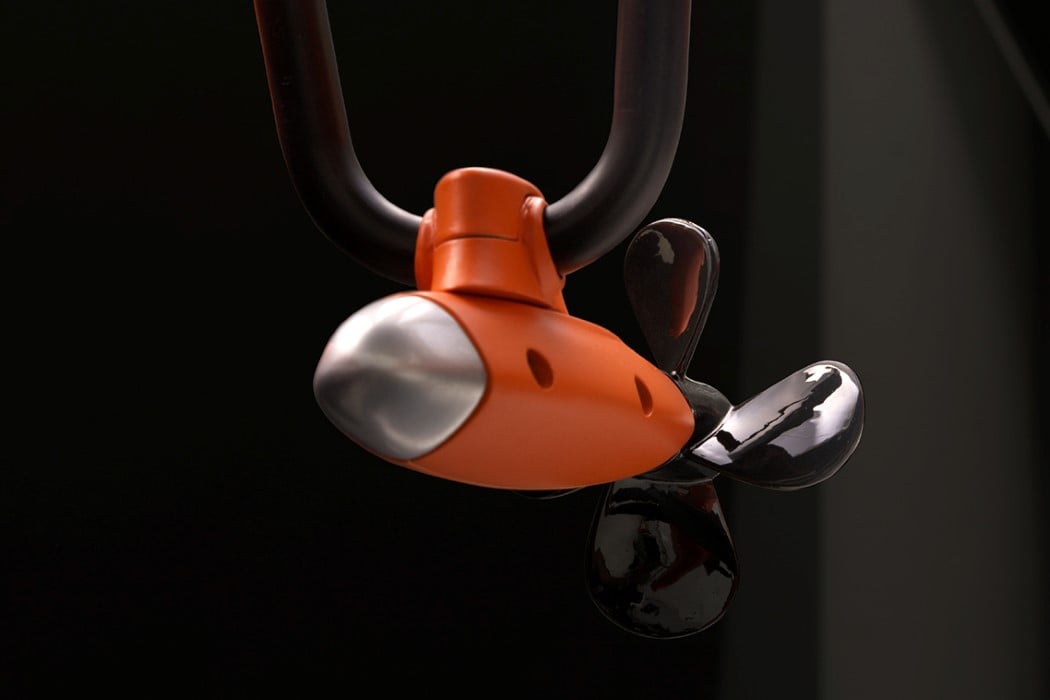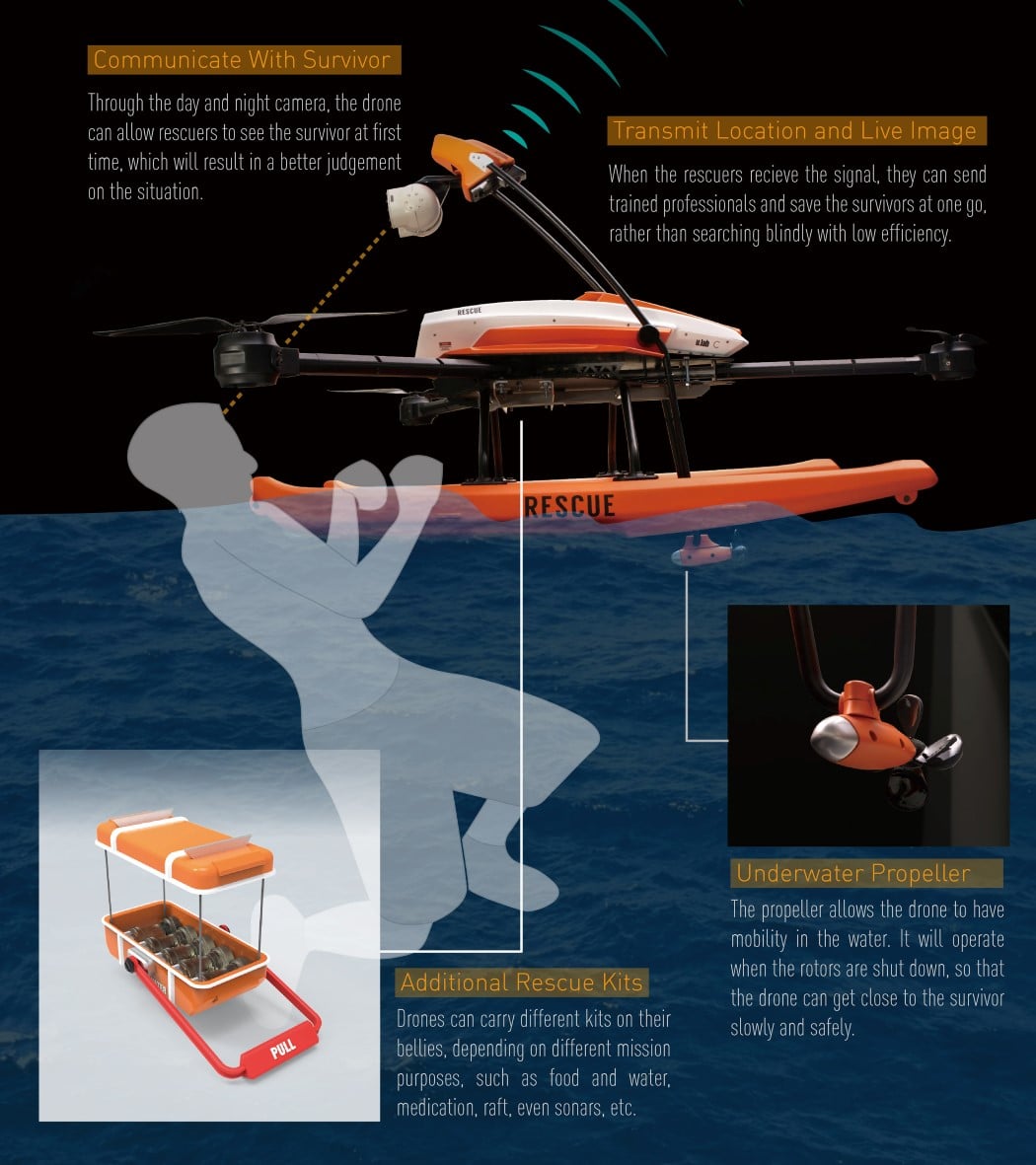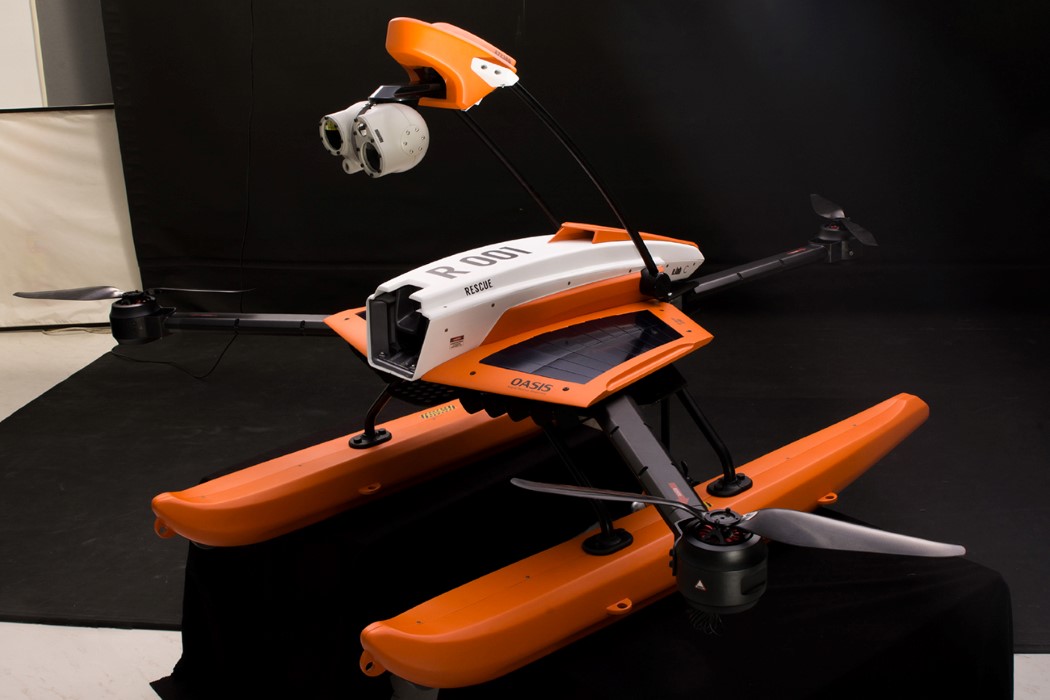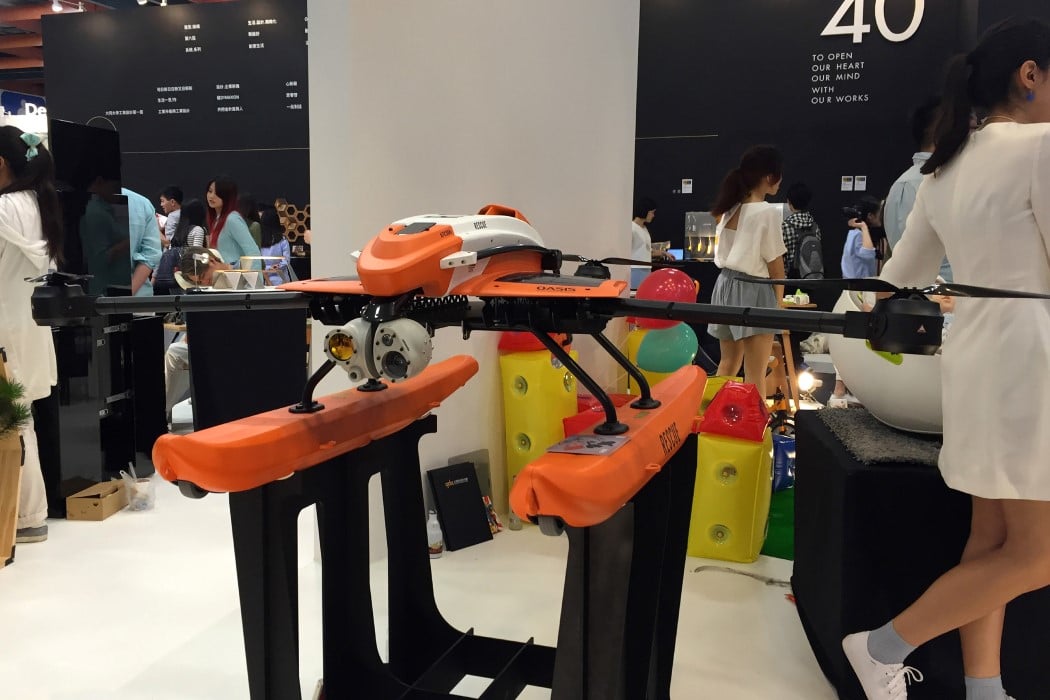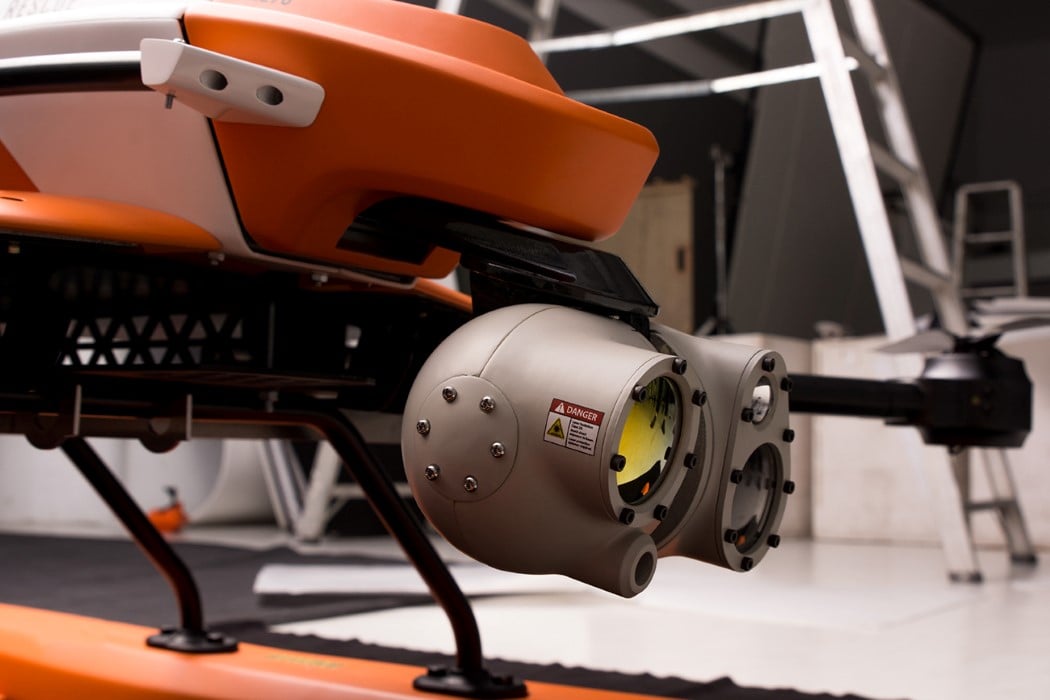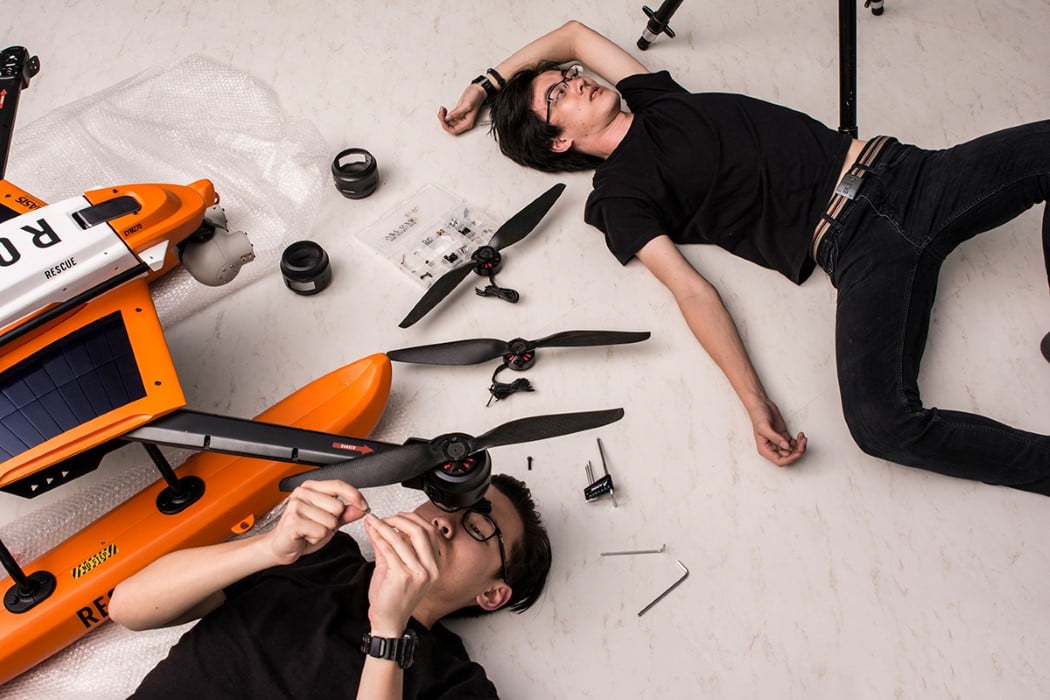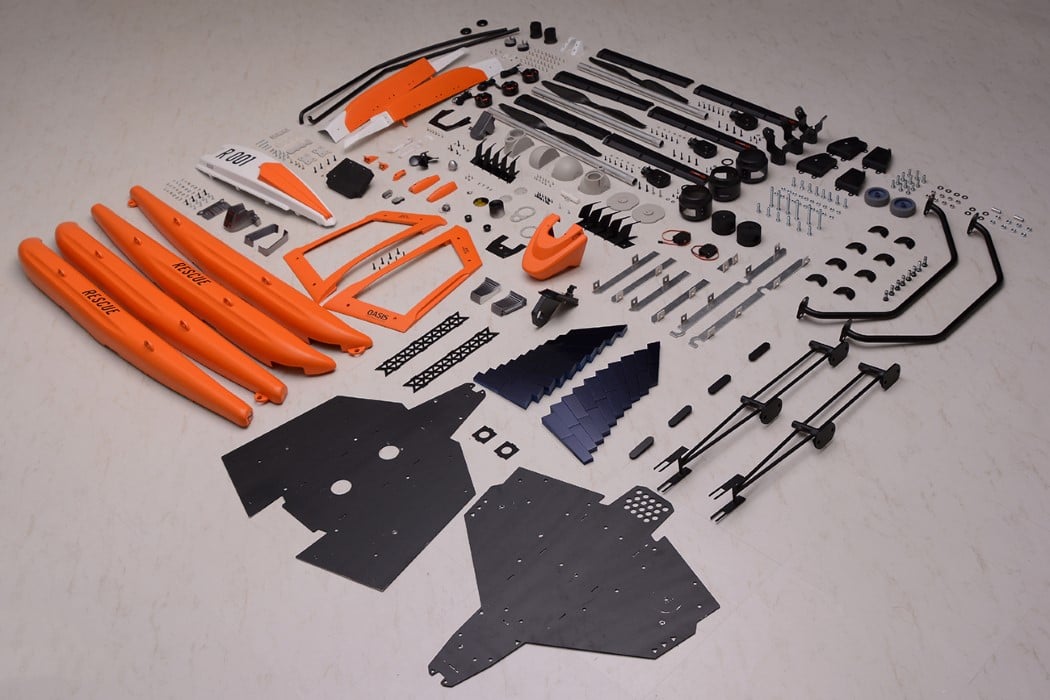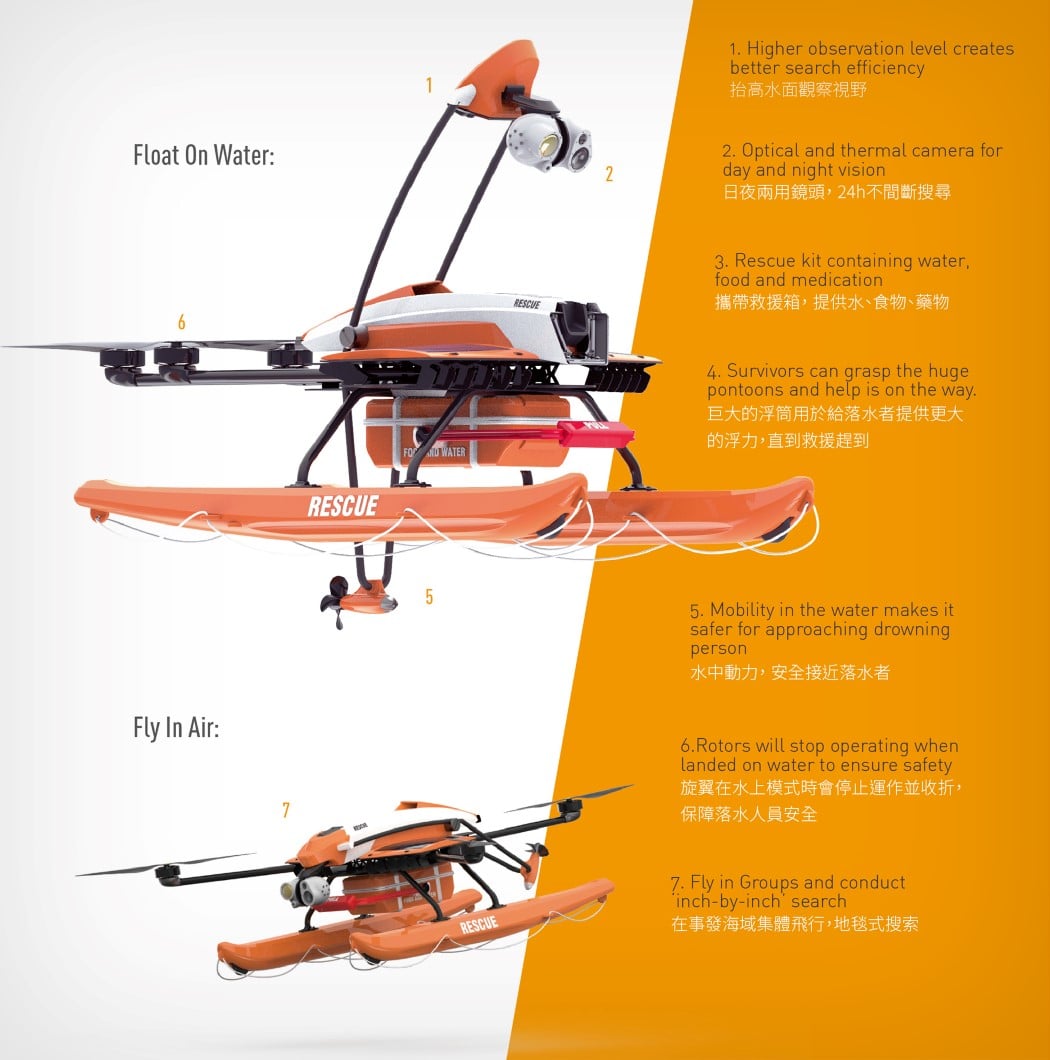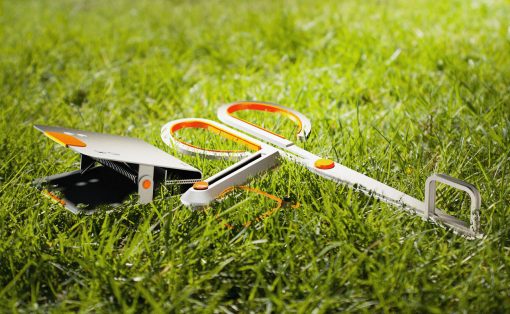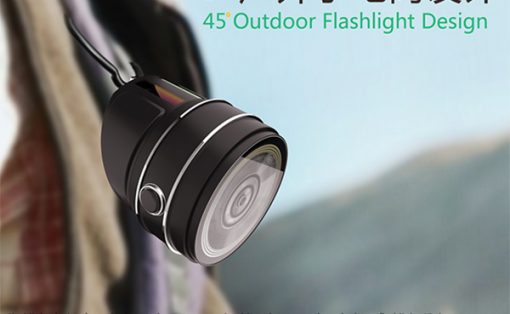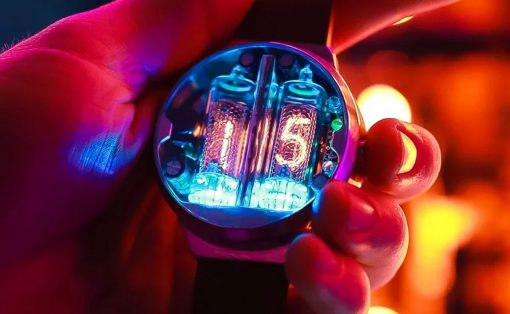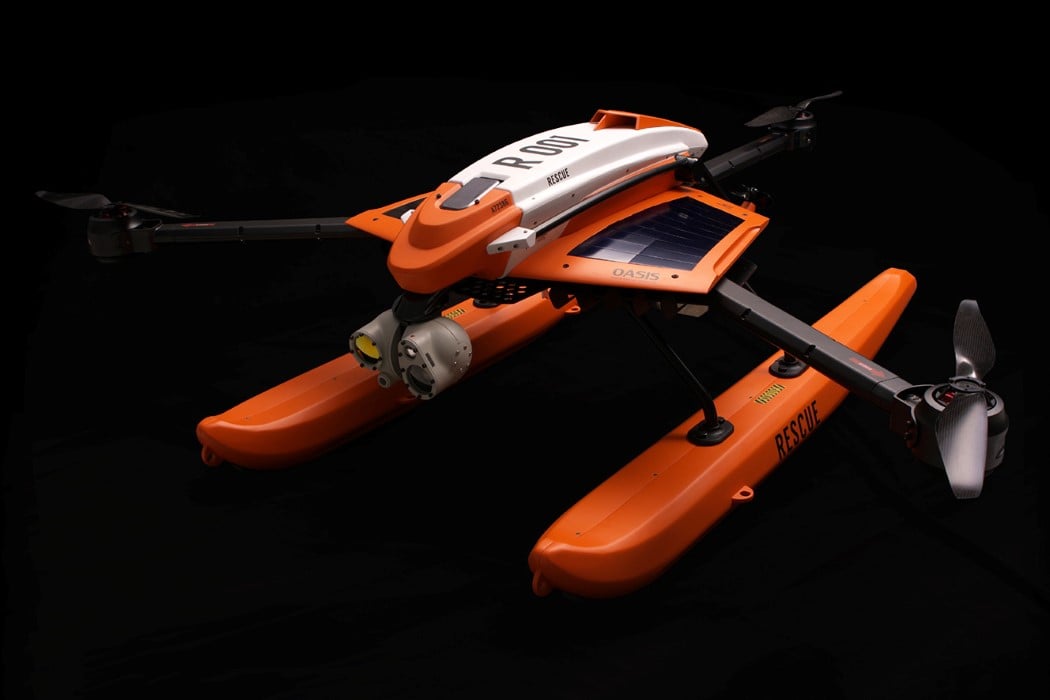
Meet Oasis, an Aeronaval Rescue Drone capable of helping rescue people drowning in waters by not just locating them, but also pulling them to the nearest vessel to safety. Designed in the aftermath of the accidents caused by the Boeing 737 Max, the Oasis aims at being able to help search-and-rescue teams to reach farther and cover much more ground in lesser time. The autonomous drones are instantly deployed in an emergency situation. They fly in grid-patterns to efficiently scan waters for any signs of humans. When found, the drone descends to the water’s surface, relying on two buoyancy devices to float on top of the water. The human then latches onto the drone, as it essentially does the job of a tugboat, pulling the human either to shore, or to the nearest rescue vessel.
I’ve long been a proponent of drones doing high-risk activities humans aren’t capable of doing, and the Oasis is a brilliant example of such a situation. Each drone comes with three air propellers and one water propeller to help it move around. The fact that it flies in the air helps it overcome turbulent waters with ease during search missions. The drone’s on-board optical and thermal cameras work effectively in both day and night to help spot signs of life during recon. Survivors can grasp onto the huge pontoons as the drone pulls them to safety. If the weather or tide don’t permit a rescue, on-board rescue-kits containing food, water, and medicine increase one’s chances for survival as the drone immediately pings location and a livestream of the survivor to rescue teams.
Designer: Ray Liu
